Naomi Duguid, author (most recently) of Burma: Rivers of Flavor and Dawn Woodward, owner of Evelyn's Crackers in Toronto, Canada, make an excellent teaching team (and pair of friends, I suspect.) Both world travelers, both lovers of whole grains and both down-to-earth in their approach to baking and cooking, they held three workshops during the Gathering: Waste Not!; Toast: Whole Grain Pan Loaves; and Multi-Grain Baking: Cookies, Scones & Pie.
Naomi also delivered the first keynote address of the Gathering. Her talk was short on words and rich in images. Saying that she liked to think she traveled to cultures rather than countries, she proceeded to open our eyes to a wider world of grain beyond artisan bread as we know it in the West. She typically travels with her camera and a few lenses, most often with no interpreter or guide and relies on infra-verbal communication to connect with the people she meets. She takes almost no written notes, using her camera to record the ingredients and steps required for whatever dish or bread is being made in front of her. As she writes in her blog, "Food is a thread that we can use to help understand others, in fact to help visualise ourselves in their place. Even as there are rocket launchers attacking, in Gaza or Syria, there are home cooks figuring out how to feed their families, and bakers heating their ovens to get the day’s bread baked. And that visualising of the daily food preparation, and family meals of others, in turn helps us remember that we are all on this planet together. It helps us have respect for the people we share the planet with, just as, when we were in primary school, we were all in the classroom together, with our differences and our difficulties, embarked on trying to understand what was going on and to learn." As each slide appeared on the large screen, Naomi commented on the person, the grain, the recipe, the location. She seemed to have total recall of each encounter and I marveled at the richness and diversity of the world she carries inside her head. I asked her for a few slides to share with you and she kindly sent the four I am posting below. Thank you, Naomi!
A woman making sushi in the village of Miyama, Japan...
A baker baking lavash in Masouleh, Iran...
Bakers baking sangak in Isfahan, Iran
Women crushing, grinding and winnowing barley to make a coarse bread which they will ferment to make thalla, a local beer, in Lalibela, Ethiopia
Dawn Woodward, aka Dawn-the-Baker, has impressive credentials as a baker (she was once head baker for Dan Leader at Bread Alone Bakery.) Watching her and Naomi at work, I was struck by their complementarity: for instance, Naomi is charmingly fuzzy about quantities (after all, most of the cooks and bakers she meets in her travels use neither scales nor cups or tablespoons) whereas Dawn weighs everything. But then Naomi is a writer and Dawn runs a cracker business. Naomi embraces variance, Dawn aims for consistency. No wonder they make a great pair of instructors.
Their first workshop was entitled Waste Not!. Being a firm believer in (and unconditional lover of) leftovers, I was looking forward to discovering new creative ways to use old bread. I don't know that I actually learned a lot (I am already using bread crumbs and croutons) but I had fun hearing what fellow leftover fans think up around the world.
Not all the recipes came out as expected. The one I was most interested in, Dedas Kharcho (old bread frittata) turned out a bit wet and (to me) rather unappealing looking even though the taste was mostly all right. Such are the hazards of cooking in the open with unfamiliar local ingredients in front of a crowd. In the write-up for the recipe, Naomi says: "This traditional recipe from Georgia transforms old bread into succulent eating. Quantities are casual. Cubes of dried bread are tossed in hot oil with onions, then simmered in added water. Once they are tender, whisked egg is stirred in, to make a kind of frittata. The recipe was given to me by Dali, a woman of eighty-five ... who had worked for years as a chemist in the Soviet era then found herself out of work with no pension after the breakup of the USSR. Her garden is a marvel, and so is her pantry, filled with shelves of gleaming preserves." That tidbit of information awoke a cherished memory: my first husband's Danish grandmother used to make a tasty omelet with whipped eggs to which she added a spoonful or two of flour and lots of chives (aeggekage). Inspired by this beloved staple of family vacations in Denmark, I sometimes add a spoonful or two of surplus starter to my own frittatas (as well as anything leftover veggies I have on hand). Although I love having a use for my starter, next time I will try old bread. In a spirit of kinship with Dali, I'll make croutons and see how the frittata turns out (I may toast the croutons a while longer and hold back on the water a bit). Having had a wonderful old Georgian friend in my young adulthood (he had escaped from Tiflis by boat in a cage - sadly I no longer remember the details - when the Soviets invaded Georgia after the Revolution and made it to Paris via Istanbul), I love the idea of adding a Georgian recipe to my repertoire.
Check out the Waste Not! booklet for more recipes and flavors: I particularly like Dawn's m'hammara and fruit bars as well as the gazpacho, panzanella and garbure suggestions.
I almost forgot to mention that Naomi and Dawn brought to class some kvass they had made with leftover rye bread from the Bread Lab and that it was excellent. Judging from some of the faces in the audience when the jar made the rounds (for sniffing purposes), not everybody agreed with my assessment. Naomi explained that she and Dawn had put chunks of rye bread in a bowl, poured boiling water over it and let it soak overnight. Then they had drained it through a sleeve, tossed the rye and poured the liquid (which by then had a gorgeous smell) into a glass jar, added a little starter (yeast and a bit of lemon juice would do too), honey, a few raisins and some blueberries (because some happened to be available). They had let the mixture sit, loosely covered with cheesecloth in a warm place for about three days. After draining it into a jug, they passed tiny goblets around. The fragrance was divine (I could definitely get high on it) and the taste remarkable but rather fierce. Definitely not for the faint of heart. Although I will try my hand at it one of these days, I'll most likely be the only one in my household to partake of it. Where tastebuds are concerned, the Man is courageux mais pas téméraire as we say in French (courageous but not foolhardy).
The next workshop, Toast: Whole Grain Pan Loaves, was mostly Dawn's baby.
She had spent a week at the Bread Lab over the winter working with Jonathan Bethony (the baker in residence) "to create whole grain pan loaves that would be ideal for toast."
She had baked a batch of three different breads prior the workshop, was proofing another to bake in the wood-fired oven while she demoed the hand-mixing of yet another one, which explains why the photos show doughs and loaves at various stages in the process.
Since she targets the farmers markets with her whole-grain toasts, she has come up with a bunch of tasty toppings which can be varied ad infinitum, depending on what's in season and on hand.
I strongly recommend checking out the Toast: Whole Grain Pan Loaves booklet where you'll find the recipes for all the loaves as well as ideas for more toppings.
Dawn and Naomi taught their last workshop Multi-Grain Baking: Cookies, Scones & Pie under a tent near the process lab in front of another, smaller, wood-fired oven, the main one having been commandeered by the pretzel workshop (which attracted a big crowd).
Of the three workshops, it was probably the most fun because of the instant gratification factor: Dawn and Naomi made a huge variety of goodies and baked them on the spot, which means we went from naked ingredients to happy tastebuds in the course of ninety minutes. My favorite was maybe the rye savory galette.
It was actually so popular that I barely reached the table in time to take a picture (and snatch a small piece) before it literally vanished in front of my eyes. The filling was hard-boiled eggs, sautéed green onions and a large amount of cooked tarragon and spinach.
Using a sweet version of the same dough, Dawn made a gorgeous and flavorful apple pie.
Dawn and Naomi next mixed and baked Ancient Durum (Kamut) Ginger Cookies...
...Barley Scones with Coffee & Molasses...
...Red Fife Tart with Pinenut-Cardamom Filling...
...and, last but not least, Buckwheat Cream Scones...
The scones were very tender. I wish I had been hungry enough by the time they came out of the oven to eat more than a large crumb. They looked tantalizing spread with butter!
As a possible variation, Dawn and Naomi suggested using a combination of cornmeal, rye and Red Fife, which they described as stunning. The basic idea is to give a free rein to your imagination, using grain as a flavor. Thumbs up to that suggestion!
I will post the link to the Multi-Grain Baking recipe booklet as soon as I get it. Meanwhile enjoy the pics! And thank you, thank you, thank you, Dawn and Naomi! The workshops must have been a lot of work but they surely reached their goal and broadened our horizons.
Related posts
Subscribe to:
Post Comments (Atom)








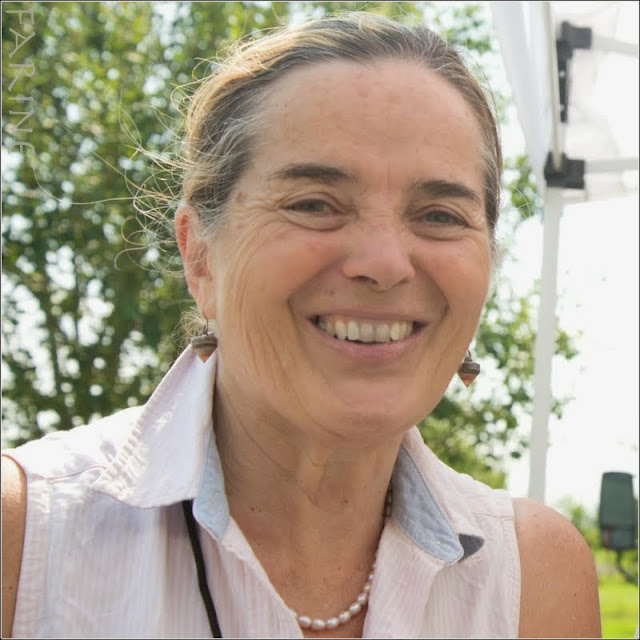












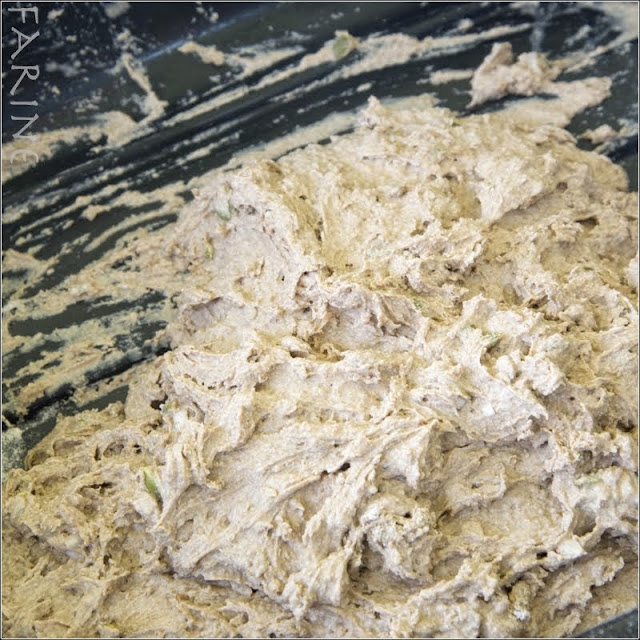



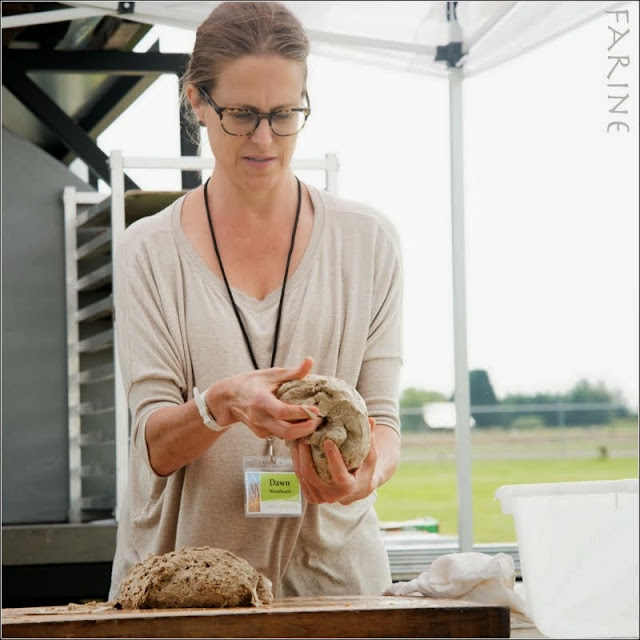
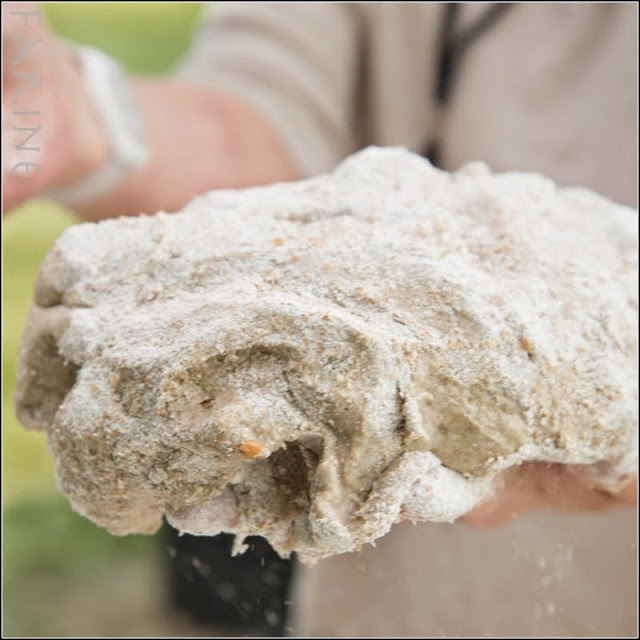
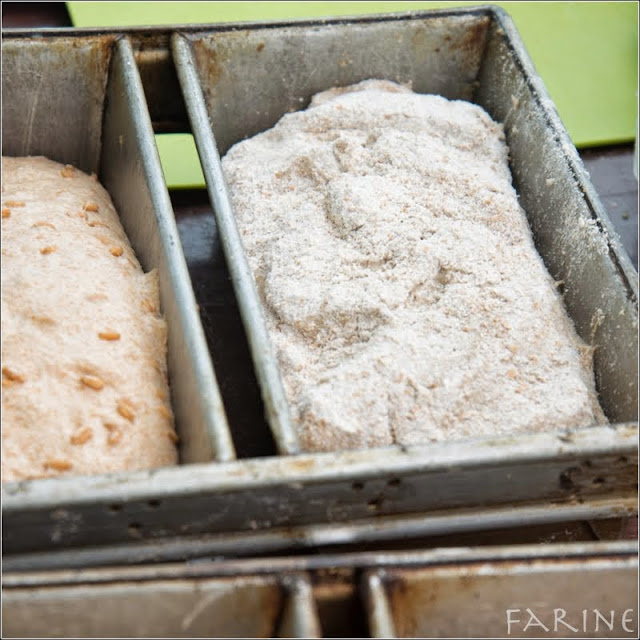





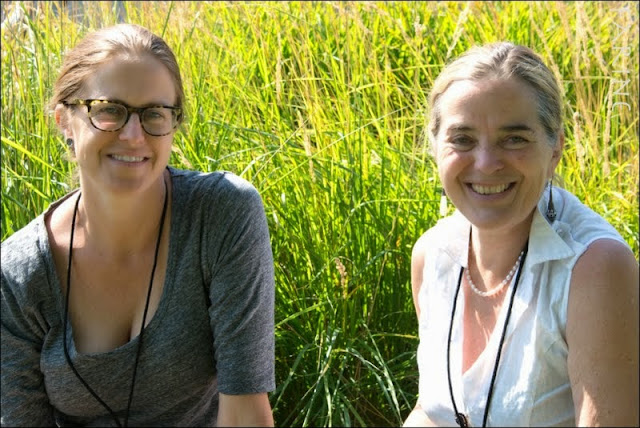
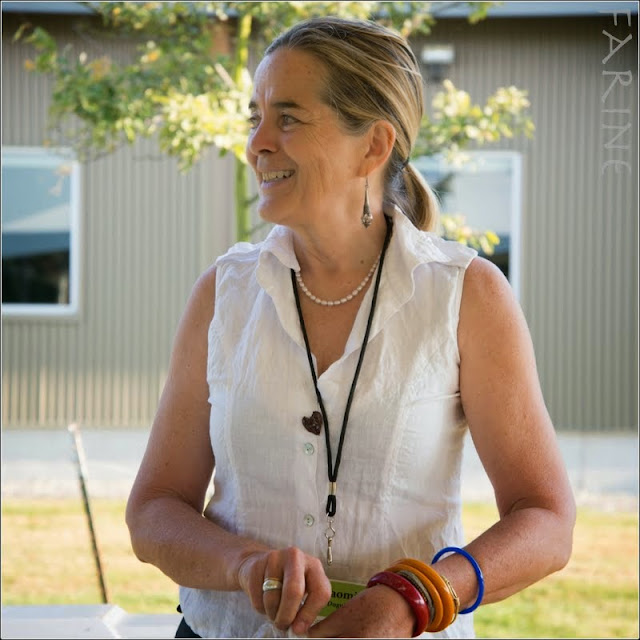











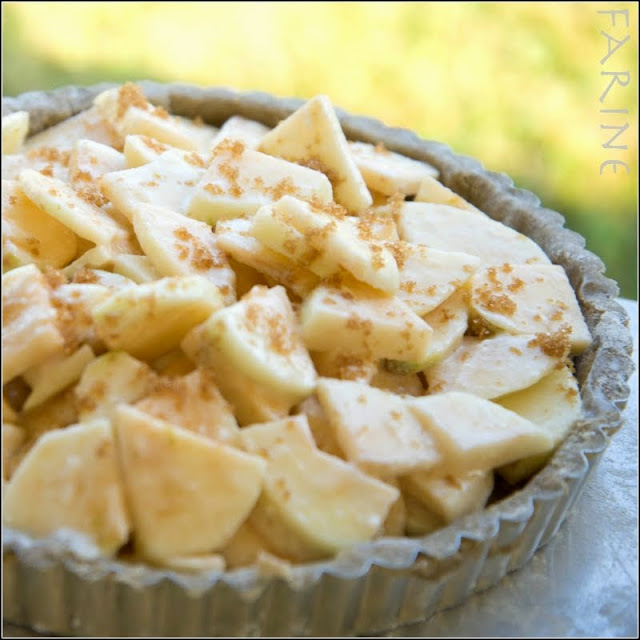


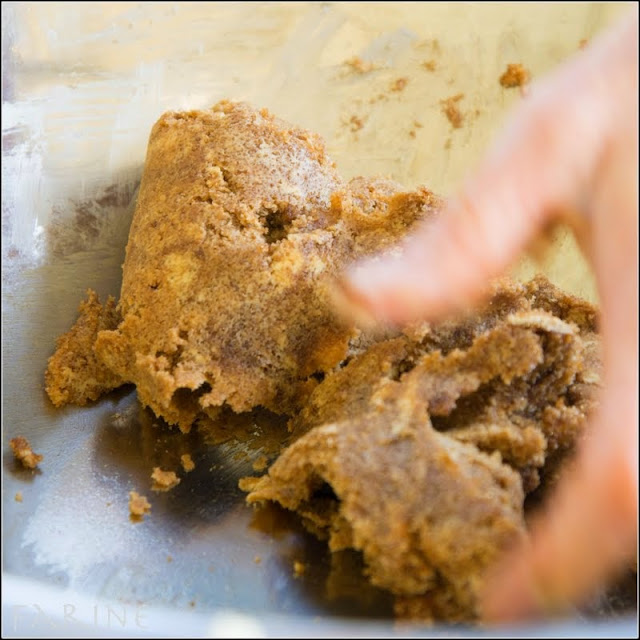



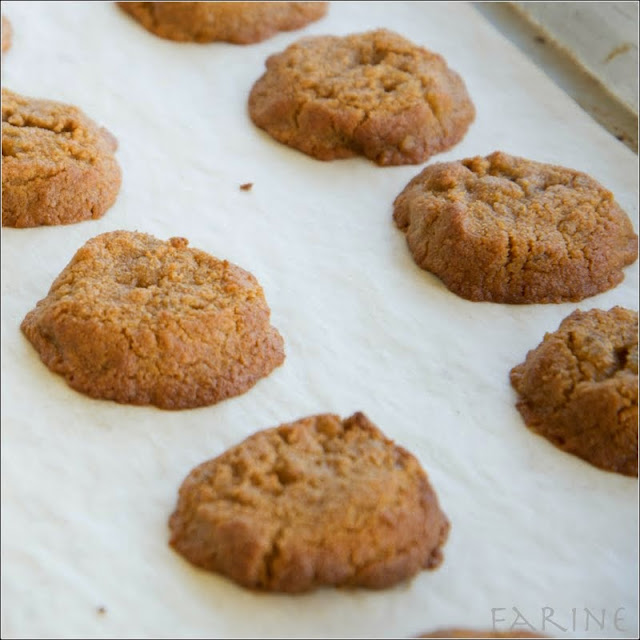









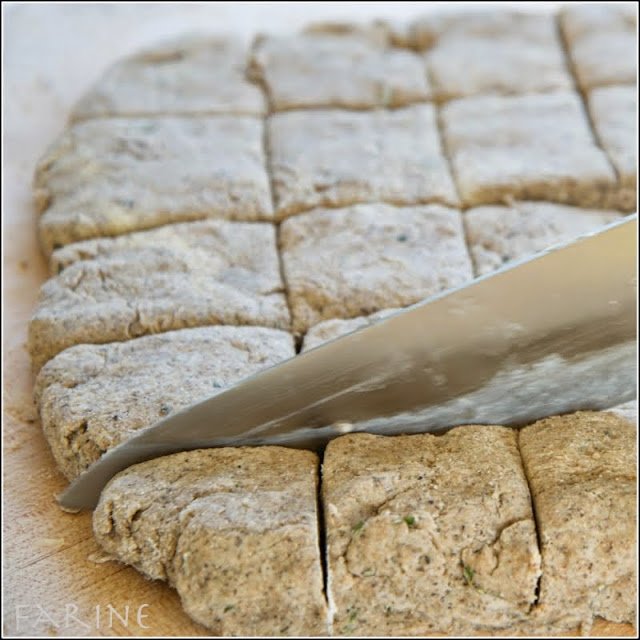









Very interesting write-up. My grandmother would work leftover stale bread either in a bread pudding with dried prunes, or baked them as "Arme Ritter" (poor knights = French toast, but not as squishy). She also fried cubed bread together with (expensive) chanterelles, they would absorb the liquid, and so yield more "chanterelles".
ReplyDeleteI would certainly have loved to try the whole grain goodies.
Karin
MC
ReplyDeleteYour photos are stunning. You have such talent as both a writer and a photographer. I loved reading all of the above and will give the whole grain loaves a try. They look spectacular. Hearty. Healthy. Delicious. Thank you so much for bringing this event into my living room so vibrantly to enjoy from my favorite chair. :*)
Take Care,
JanetH
One word for you, MC: AMAZING!
ReplyDeleteThank you for bringing baking alive!
Lumi